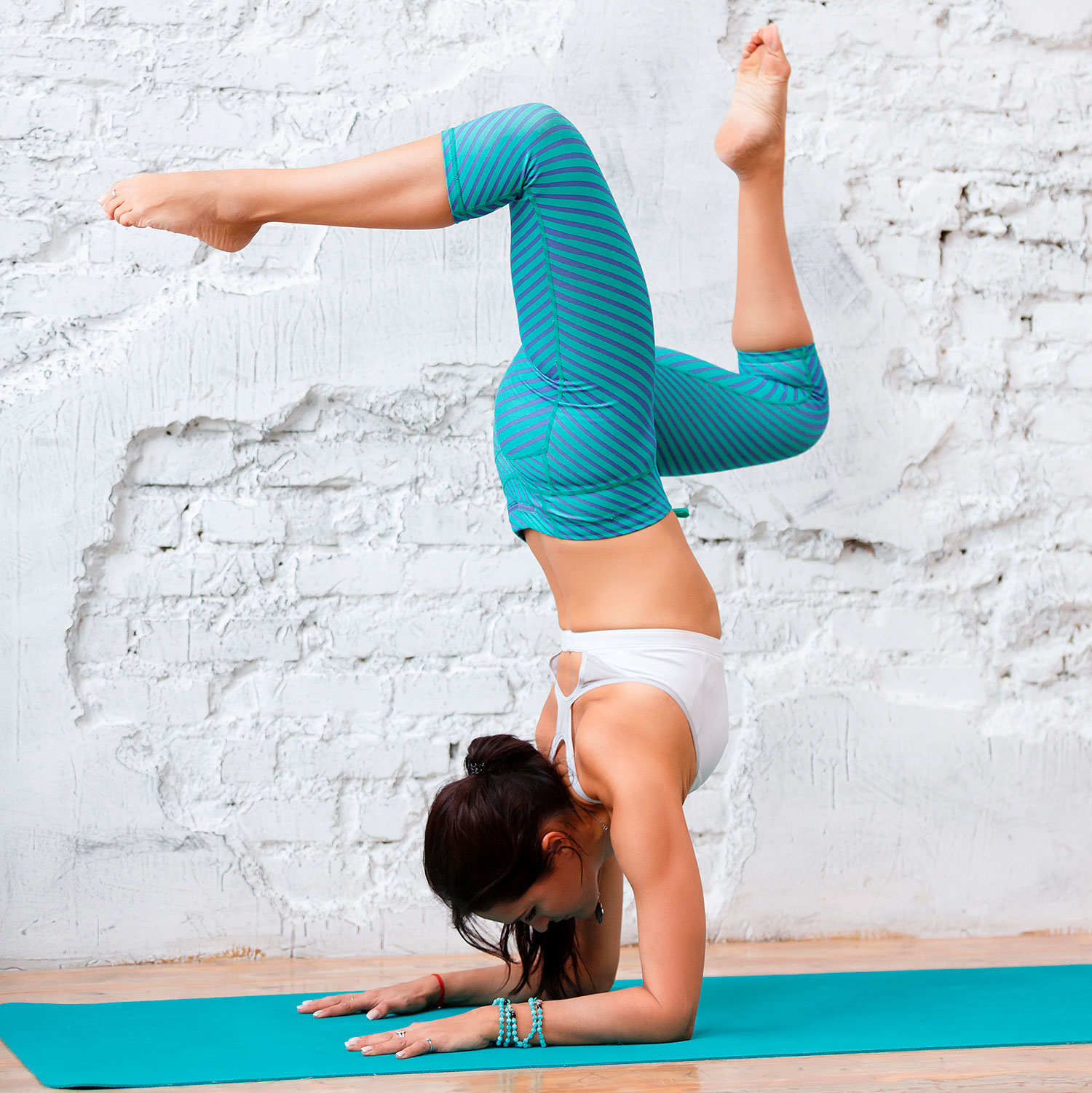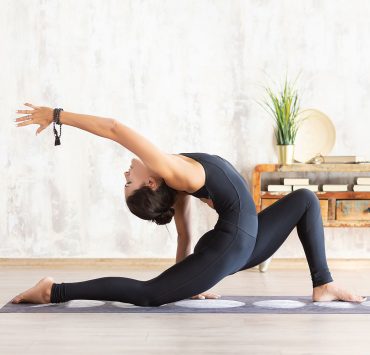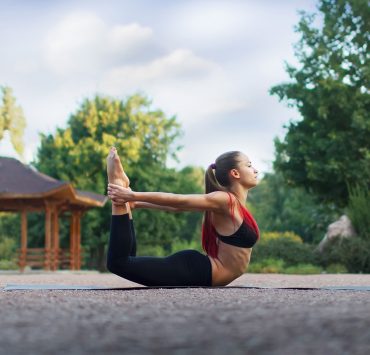
Having been a teacher’s assistant at over 50 yoga teacher…
It’s no secret that yoga is one of the best ways to relive and reduce stress in your life. Being stressed out is more than just an inconvenience of modern life – it can dramatically affect your health and longevity. When life becomes overwhelming and the stress is mounting, it becomes more difficult than ever to take a time out and nourish yourself. But, that’s exactly what you need to do! While a vigorous yoga practice might be what you gravitate towards (after all, you can’t hear your stressful thoughts when you’re huffing and puffing!) the best thing for chronic stress is gentle, quiet, restorative yoga.
While it may be hard to sink into the poses at first, just keep trying! Restorative yoga can help you get in touch with your innermost self, relax, and switch into your parasympathetic nervous system. Even if you only practice one of these poses every day in addition to your regular yoga routine, you will see a dramatic decrease in your stress over time. Yoga is scientifically proven to increase vagal tone, which makes you more resilient to stress.
So, what are you waiting for? Here are some of the best restorative yoga poses to relieve stress:
Supta Baddha Konasana — Reclined Bound Angle Pose

This is an excellent restorative yoga pose for almost any ailment – from the common cold to chronic stress, this pose will help you relax and sink into a peaceful, meditative state. When you are practicing restorative yoga, remember that the goal is not to get a deep stretch. Instead, the goal is to give your muscles, joints, and bones ample space and put the body into a relaxed state through the use of yoga props.
You will need the following props for Reclined Bound Angle Pose:
Bolster or two blanket rolls stacked on top of each other
2-3 yoga blocks
Yoga strap
(Optional) Foam roller
(Optional) Extra blanket for coziness and/or head support
To get into Reclined Bound Angle Pose, follow these instructions:
- Place the bottom end of your yoga bolster at the base of your spine and lay back to see how it feels. If it feels uncomfortable on your lower back, you need to make the bolster taller by layering a blanket roll on top, or by propping the bolster up with an angled yoga block.
- Place a blanket roll across the top of the bolster to make a “T” shape. This will support your head and neck if you are prone to upper body pain.
- As you lay back, bring the bottoms of your feet together so that your legs form a diamond shape. Avoid having an intense stretch along the inner thighs. This will prevent you from relaxing fully. Instead, you will want to prop the legs up with either a yoga block under each thigh, a blanket roll under each thigh, or a foam roller under the knees.
- (Optional) If you would like to hold the pose for a long time, you can buckle a yoga strap so that it forms a loop around your waist and feet. Again, just make sure it isn’t forcing you into too deep of a stretch.
- Lay back and relax! If you are having trouble getting in to a meditative state, place an eye mask or light blanket over your eyes and bring one hand to your belly and another to your heart. Focus on having deep, long exhales and allow the yoga props to fully support your weight. This pose can be held for 15-30 minutes.
Don’t be surprised if you experience an emotional release during this pose. It is very common for people to cry, get angry, or experience a plethora of trapped emotions while opening their hips. The pelvic and hip area becomes bound when emotional, traumatic, or stressful events occur. While it can be uncomfortable, remember that it is healthy to release your emotions and resist the urge to go into the story – the goal is embrace the feelings, let them pass, and move into a new state of calmness. If you are interested in yoga for trauma, consider Colleen Saidman Yee’s book, Yoga for Life. In it she discusses several poses that are excellent for trauma and PTSD.
Salamba Matsyasana Blankets — Mountain Brook Pose

Many times when people are stressed out, they tend to contract their diaphragm. If you have chronic stress or PTSD, your diaphragm might be “stuck” in that position. Clothing can also constrict the waists and chest, and prevent you from breathing at your full capacity. Poses like Mountain Brook Pose relax the diaphragm into the proper position and stretch all of the intercostal muscles in your ribs. This allows you to take longer, deeper breaths and get more oxygen throughout the day. And, taking a nice, deep breath is an excellent way to spur relaxation!
For this pose, you will need the following yoga props:
2 Yoga Bolsters or 2 Large Blanket Rolls
1 Small Blanket roll for the head
To get into Mountain Brook Pose, following these instructions:
- For this pose, you will have one yoga bolster under the chest, one under your knees, and a small blanket roll under your head.
- This pose is pretty basic, but placing the bolsters or blankets in the right position ensures maximum comfort and maximum relaxation.
- The yoga bolster under your chest should be placed right under the bottom tips of your scapula. The upper parts of your shoulders should be on the ground.
- The yoga bolster at your lower body should be placed under your knees. Your legs should feel relaxed, comfortable, and supported. If your feet have a tendency to fall outwards in a V-shape, you can loosly buckle a yoga strap around your legs to keep them level.
- The blanket roll under your head should go just below your neck where your spine and head connect. Make sure your chin is level, not pointing too far back or too far down.
If your stress is intertwined with depression, or if you struggle with your posture, this pose is an excellent support for you. The pose balances your body chemistry and regulates your body fluids, providing you with a gentle opening in the chest cavity. Some experts believe depression can be caused through a mind-body-connect event where poor posture makes you feel depressed. On the contrary, opening up the chest and lengthening the spin creates new movement for body fluid and can help you feel more upbeat and less stressed.
Salamba Balasana — Supported Child’s Pose

Do you ever have those days where you just want to curl up in bed and ignore the whole world? In moments like that, turn to Child’s Pose. This pose is incredibly nourishing and by protecting and supporting the front side of the body, the pose can help you feel safe and relaxed. This pose is a gentle forward fold, but unlike other forward folds, it stretches the backside of the body without putting stress on the lower back or hamstrings.
When you spend time in this pose, you encourage back body breathing (as opposed to stressed out, shallow breaths) and surge blood and lymphatic fluid into the heart, lungs, and head. These are the areas that tend to tense up when you’re stressed out, so loosening and softening them can send the message to your body that it is okay to relax.
The only prop you need for this pose is a yoga bolster or two blanket rolls staked together.
To get into the pose, follow these instructions:
- Begin in a kneeling position on your yoga mat. The yoga bolster should be placed in the middle of your mat. Be sure to keep a blanket nearby in case you get cold during the pose. Because it has a cooling action, you might feel slightly cold once the pose starts to work.
- Straddle the bolster and lay the front of your body forward over the support. If you have pressure in your knees, you can place a blanket roll under your knees and another between the back of your legs and shins.
- Turn your head to one side, but keep in mind you want to shift it to the other side halfway through the pose.
Viparita Karani — Legs Up the Wall

If you struggle to relax in restorative yoga poses, give this pose a try! Even high-strung children get amazing, relaxing benefits from the Legs Up the Wall pose. This pose increases the circulation to your core and helps stress hormones flush out of your body more quickly. It also loosens up your hamstrings and relieves tension in your shoulders, neck, and lower back. All spots that can flare up under times of stress!
There are many different options for props in this pose, but in general here is what you need:
- Yoga mat
- Yoga bolster
- Two blanket rolls
- (Optional) Sandbag
To get into the pose, follow these instructions:
- To practice this pose restoratively, you will need a prop to elevate the pelvis.
- Kneel next to the bolster or blanket with your buttucks against the wall.
- Drop down onto your elbow that’s closest to the prop and roll onto your back.
- Your buttocks should be flush with the wall, so scoot forward if needed.
- Place your hands on your lower belly or above your head in cactus.
- Stay for 10-30 minutes. Exit the pose slowly by sliding the legs down the wall and allowing the blood to return. Coming out too quickly can cause head rushes or feinting.
- If you have the flexibility (or a partner who can help you out) placing a sandbag across your feet in the pose feels amazing! The added pressure stimulates the trigger points on your feet and relieves tightness in the lower back. It’s almost as good as a massage!
What's Your Reaction?
Having been a teacher’s assistant at over 50 yoga teacher trainings worldwide, Rebecca Rebecca has a firm grasp on the fine art of yoga and meditation. In her work, she carefully reflects on a vast expanse of knowledge to help others find peace in both body and mind.














